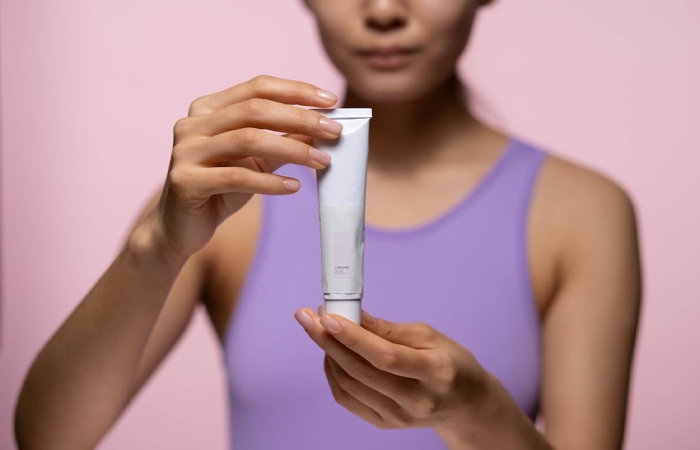Beauty Brands: In the ever-evolving world of beauty, where trends evolve rapidly, the race to stay ahead is an irresistibly captivating journey shaped by innovation and adaptability. From the social media phenomenon that turns platforms such as Instagram and TikTok into virtual runways to the embrace of inclusivity and sustainability as guiding principles, the beauty industry is a testament to constant innovation.
This blog post presents an in-depth exploration of marketing for beauty brands, covering current trends and innovations that engage audiences. Join us as we reveal strategies driving beauty brands forward in an era filled with changes and advancements.
Table of Contents
Social Media Dominance
Social media has revolutionized beauty marketing. Instagram, TikTok, and YouTube have become virtual arenas for beauty brands to showcase their latest offerings, tutorials, hacks, and innovative features. Beauty brands leverage these platforms strategically to forge connections with audiences, cultivate communities, generate excitement for impending releases, or simply launch products.
But to truly stay ahead, beauty brands should always be aware of what their rivals are doing. If, for instance, TikTok is your preferred platform, you should calculate your competitor’s TikTok engagement rate to better understand what you should aim for in terms of engagement. Brands can obtain vital competitive data by tracking their follower growth, engagement rates, views, and popular content. This information helps them adjust their strategies and maintain a competitive edge in social media marketing while also keeping up with industry norms.
Inclusive Beauty
Beauty industry transformation is taking place rapidly as consumers demand representation and diversity. Brands have responded by diversifying product lines to accommodate all skin tones, hair types, and beauty preferences. The evolution extends beyond mere product offerings. Marketing strategies now emphasize individuality over conforming to traditional beauty standards.
Inclusive marketing campaigns have become an essential element in this movement, featuring models from diverse ethnicities, ages, and body types who appeal to a broader audience. Beauty brands have recognized inclusivity’s value by adopting it into their ethos while actively advocating it as part of their core principles. This helps not only create positive societal impacts but also expand and diversify customer bases while spreading inclusiveness throughout the beauty industry landscape.
Sustainability Matters

Sustainability has evolved from being an isolated trend into an integral component of innovation and relevance within the beauty sector. An estimated 17.6% of consumers actively search for brands that embrace eco-friendly practices. The heightened awareness of environmental issues has driven a surge in demand for beauty brands to adopt ethical business practices. Numerous brands have integrated sustainability seamlessly into their marketing narratives. With this, they manage to show their dedication to eco-friendly packaging, cruelty-free practices, vegan ethics, and other sustainable principles.
These companies actively engage in sustainable initiatives and transparently communicate them to target consumers, fostering consciousness about environmental footprints. This shift towards environmental stewardship not only reflects the industry’s responsiveness to global concerns but also propels a transformative journey towards a more sustainable and responsible future in the beauty sector.
Sustainability in marketing goes beyond being just a fad. It has become an ethos aligned with an increasingly environmentally conscious consumer base. Brands that prioritize sustainability not only contribute to a healthier planet but also demonstrate to their customers how ecological responsibility is key to standing out in an otherwise highly competitive beauty landscape.
Technology Integration
The rapid evolution of technology is reshaping the landscape of beauty marketing. Innovations such as virtual reality (VR) and artificial intelligence (AI) are converging to offer customers captivating and tailored experiences. Leading beauty brands leverage AI analysis for personalized skincare recommendations and virtual try-on experiences.
To gain deeper insights into consumer preferences and behaviors, brands are increasingly investing in data analytics. Beyond enhancing shopping experiences, technology plays a pivotal role in collecting essential data that informs and shapes future marketing strategies. This strategic integration of technology is pivotal to staying ahead in the dynamic beauty industry.
Storytelling and Authenticity
Consumers yearn for authenticity more than ever in today’s overly connected world, and beauty brands are actively amplifying this commitment through storytelling to build meaningful connections with their audience. This goes beyond conventional marketing by going deeper into a brand’s narrative, values, and the people creating products. Authenticity is now embedded in marketing content, far beyond product attributes alone.
Brands are elevating their narratives by emphasizing their commitment to social causes, providing behind-the-scenes glimpses, and honoring customer stories with greater authenticity than ever. This shift not only builds trust but can also be used as a powerful influencer when deciding on beauty products for consumers.
Final Words
Remaining at the forefront of dynamic beauty marketing necessitates continuous awareness of emerging trends and innovations. The increasing influence of social media as a platform for celebrating inclusivity, promoting sustainability initiatives, integrating technology, and authentic storytelling contributes significantly to the success of beauty brands.
Embracing these developments positions brands strategically in the ever-evolving landscape, ensuring relevance and resonance with their target audience. Beauty brands can not only capture audiences with these strategies but also position themselves as trailblazers within an industry marked by constant evolution.

